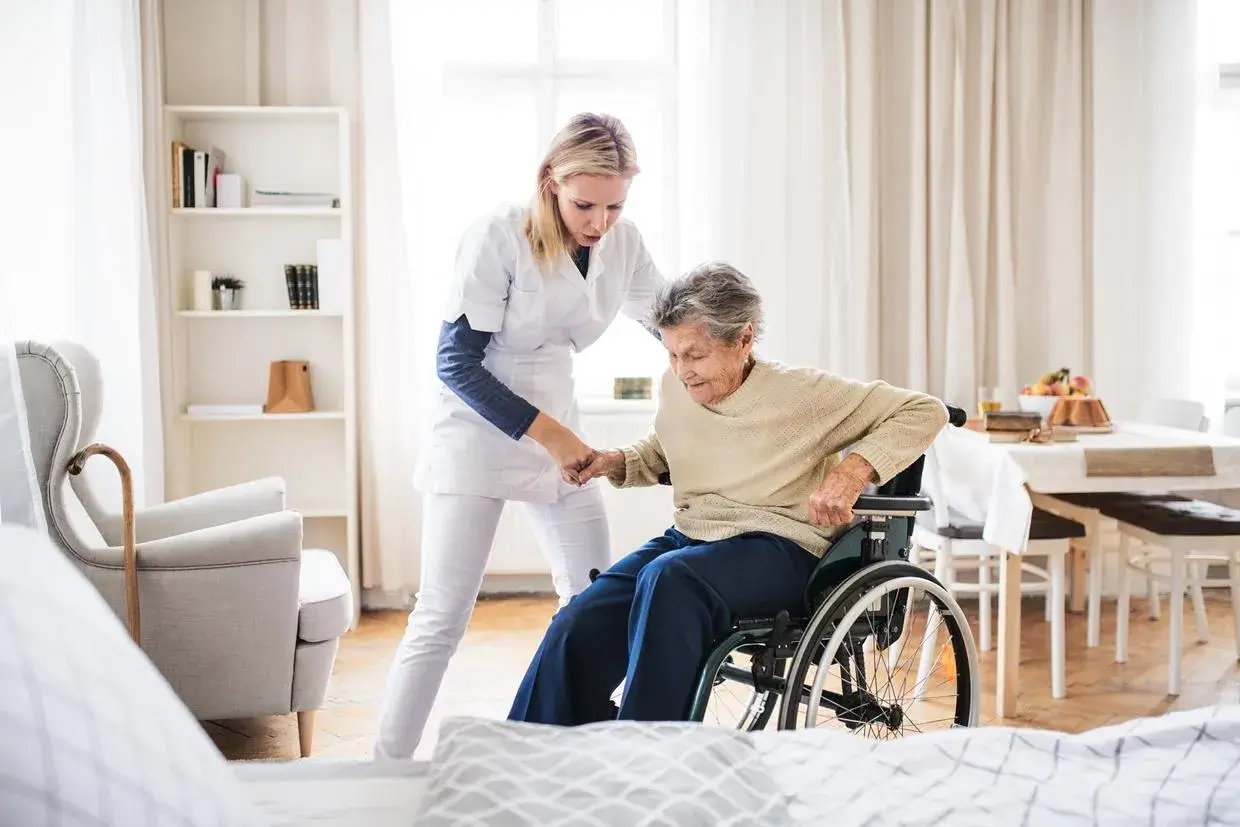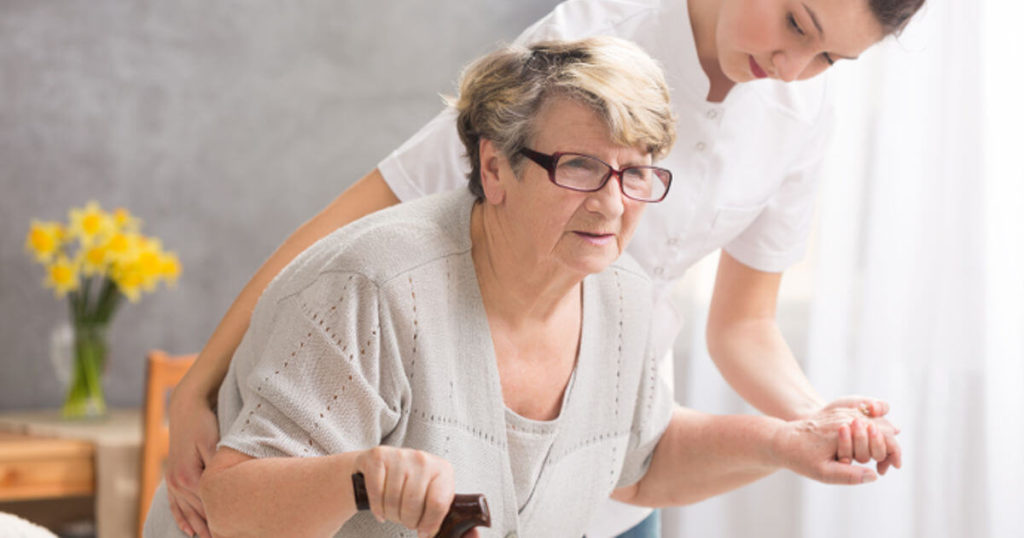Transferring Elderly Patient

Common Types of Transfers
Transferring elderly patients the right way requires expertise, coordination and care. No two elderly patient transfers are exactly the same. If the transfer is not performed correctly or with the patient’s individual needs in mind, it has the potential to cause injury or exacerbate pain. This is precisely why only a trusted team of private duty nursing specialists and healthcare professionals should be perform the transfer of your parent, grandparent, aunt, uncle or other elderly relative.
Our partners have undergone extensive training and education to safely transfer elderly patients from beds to chairs, medical treatment rooms and other spaces. It takes more than brute strength to perform these transfers. The proper lifting and transferring techniques matter much more than the size of the person attempting to perform the transfer. Furthermore, using the right equipment is also essential to a safe and effective transfer. The use of equipment such as an elderly lift assist facilitates a safe, timely and successful transfer that causes the patient as little discomfort as possible.
Manual lifting and subsequent transfers pose risk to patients, potentially even causing an injury or worsening an already existing injury. Though some manual lifts
and transfers are still conducted, mechanical lifts are common as they facilitate the transfer of the patient as safely and efficiently as possible. Mechanical lifts are ideal for transferring dependent patients and those in need of assistance to maintain sitting balance.
We perform manual lifts with specialized equipment yet our teamwork during the lift and transfer process is just as important. We communicate and consider each patient’s unique condition and health challenges when performing the transfer. Even the patient’s cognitive status plays a role in the manner in which mechanical lifts/transfers and other transfers are performed. Patients with weight-bearing restrictions are almost always mechanically transferred, especially if the restrictions are on the bilateral lower extremities.
There are also some instances in which active transfers performed by physicians are restricted. Our team carefully uses a mechanical lift along with a body sling to perform the lift transfer. Slings are sometimes used to support the patient’s head. There are also some instances when full body slings are required for support extending from the shoulder to the knees and thighs.
Stand pivot lifts, commonly performed at rehab units, are performed for patients capable of standing for a brief period of time and have sufficient strength and range of motion in the knees, hips and ankles. This lift and transfer is also optimal for patients with sufficient balance while sitting. A gait belt is used to complete the stand pivot lift and transfer. Once the gait belt is applied to the patient, a wheelchair is positioned at a 30-degree angle by the bed. The wheelchair brakes are locked, setting the stage for the patient to inch forward to the bed’s edge. The feet are then positioned flat along the floor. The nurse or other health professional performing the lift and transfer moves in unison with the patient to reach the standing position. The patient pivots his or her feet and transitions his/her backside to the wheelchair. The feet pivot in unison with the body so there is no twisting along the ankles and knees.
Sliding board transfers are performed when patients have enough strength along the trunk and upper extremities and can maintain posture while seated. The patient must also be able to shift weight from the buttocks in order to slide along the sliding board. A gait belt is used by the clinician to facilitate the sliding motion to a wheelchair positioned at a 30-degree angle with the bed. The gait belt is applied and the wheelchair armrest is removed when positioning patients in bed. The board is positioned under the patient’s buttocks prior to the patient’s transition back to the upright position. The body moves with a leaning motion and depression of the shoulders to raise the backside and gradually scoot into the wheelchair.
The squat pivot transfer is an alteration of the stand pivot transfer. The patient must have sufficient strength in the upper extremities and sufficient balance while sitting to complete the transfer. The therapist repeats the steps required in the stand pivot transfer yet the patient does not reach the standing position. Rather, the patient remains squatted and lifts in the hip area, using the upper extremities to transition. This transfer is optimal for those who have weak trunks and minimal extension strength in the hips or knees. Assisted lifting squat pivot transfers are also used for those who have minimal range of motion extension in the hips or knees that prevents them from remaining upright in the standing position.
How It Works
Book Your Appointment
Your Information is 100% Safe & Secure
HIPAA-Compliant Privacy
Peace of Mind For Loved Ones
Transfer From Bed to Wheelchair
Transferring a patient from his or her bed to a wheelchair is challenging as it has the potential to injure the patient as well as the person performing the transfer. This type of transfer is executed best when the patient is proactive, meaning he or she is communicative with those helping with the transfer. However, if the patient lacks strength and cannot communicate, a fully body sling lift or two individuals will be necessary. Activities of daily life nursing care professionals can also facilitate this transfer of a weak patient by bracing the knees against his or hers so the legs do not buckle. Ideally, the transfer will be toward the patient’s strong side.
The transfer begins with the patient sitting upright. The wheelchair is locked in position by the bed. The wheelchair armrest by the bed is removed. The leg rests are then swung away. The patient is helped onto his/her side to face toward the wheelchair. An arm is positioned beneath the patient’s neck to support the shoulder blade. The other hand is positioned below the knees. The patient’s legs are then swung over the bed’s edge to help him or her sit up.
The next component of the transfer is the patient transitioning to the standing position. This requires that the patient scoot over to the bed’s edge so shoes or skid-proof socks can be added. Arms are positioned around the chest of the patient and the hands are clasped behind the back. It is also possible to use a belt. The individual performing the transfer leans back and shifts his or her weight to lift someone up onto the wheelchair.

How to Help the Elderly Stand Up
If you are wondering how to how to lift an elderly person off the floor, you are not alone. Most elderly individuals are capable of standing with the right assistance and strategy. Learn how to help an elderly person lift up from a chair or rely on the experts and it will improve the patient’s quality of life, help with ADL, get the blood flowing and possibly set the stage to move throughout the room. The technique applied to help the patient stand is particularly important. A safe transfer technique safeguards both the patient as well as the person providing assistance. If necessary, a transfer board will help facilitate the transition.
The best lift for elderly technique involves positioning the feet apart with one foot ahead of the other, bending at the knees and moving in the direction that the patient will be moved. It also helps to maintain a center of gravity close to that of the patients while minimizing stooping and twisting. Ideally, the patient will scoot toward the chair’s edge. The patient’s feet are positioned flat and aligned with the hips. The patient is to put a hand on the chair or the seat. The assistant is to hold the patient’s weak side and verbalize the intent to help them stand.
Helping a Patient Sit Up
A patient who has trouble standing up from a sitting position needs and deserves assistance. Ideally, a risk assessment along with an evaluation of the patient’s muscle strength will be performed before attempting to help him or her sit upright. A patient who has not moved to the upright sitting position might experience vertigo, so it is best to help such an individual make the transition in a gradual manner.
If the bed can be raised, it should be moved toward the upward position to minimize the strain on the back. The patient is rolled to a side and a slide sheet is positioned by the back. The patient is rolled onto this sheet and pulled upward toward the head portion of the bed to sit upright.

